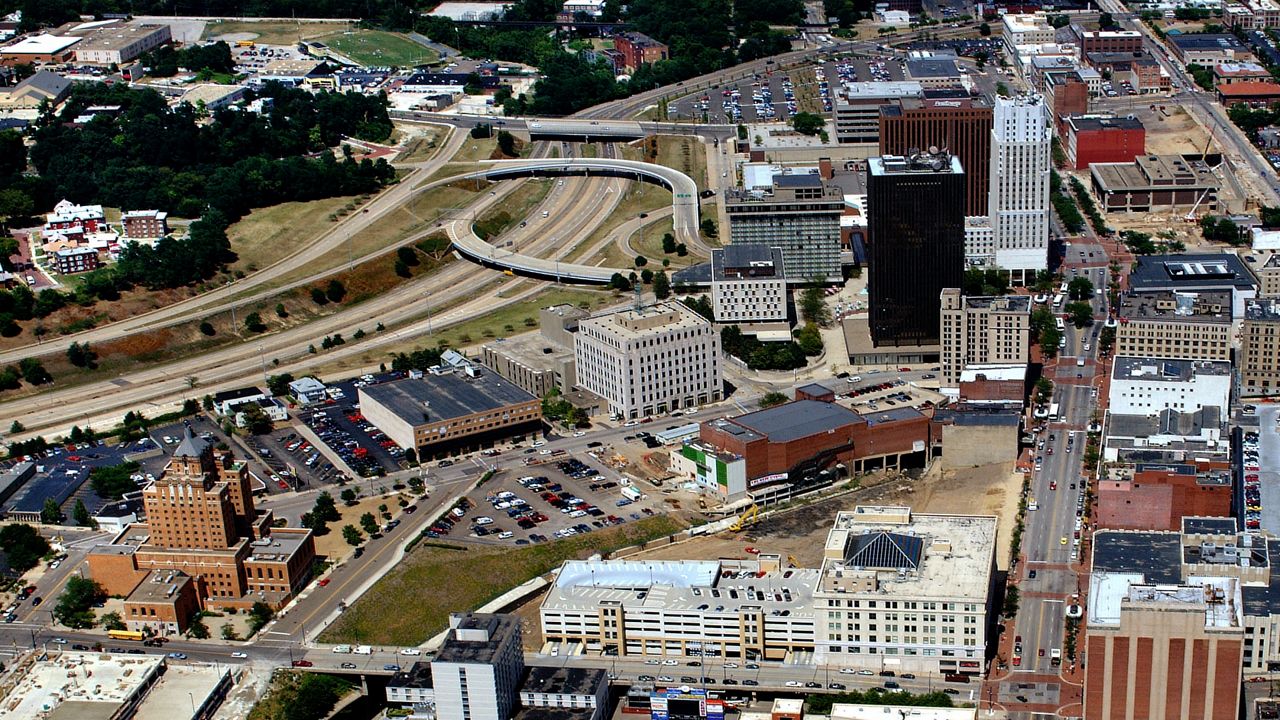AKRON, Ohio — Akron families whose lives were disrupted decades ago when their homes and businesses were destroyed by the Innerbelt Highway are invited to attend a reunion, to share stories and give input on what the next phase of the highway should be.
The Akron Innerbelt Reunion: Yesterday, Today and Tomorrow is hosted by Akron Urban League, the city of Akron, the Akron Beacon Journal and Akron NAACP, Knight Foundation, Freedom Bloc, Big Love Network, African Rites of Passage Institute and St. Ashworth Temple.
The reunion is Saturday, Aug. 28 from 1 p.m. to 5 p.m. at the Akron Urban League, 440 Vernon Odom Blvd. Register online for the free event.
The purpose of the reunion is to bring together original residents, or their family members, who were displaced when the highway was built to begin the process of healing and attempt to find come to a resolution, organizers said.
The reunion is one of several events that will be hosted to identify how the city and those residents can work together on a project that is sustainable into the future.
The event is part of Reconnecting Our Community, a larger project launched in 2019 with the goal of learning from displaced residents what the best use of about 33 acres of the now decommissioned highway should be.
In 2020, the city enlisted Liz Ogbu, described in her bio as “a designer, urbanist and spatial justice activist,” to lead the project. Through Ogbu’s Studio O, she works with communities around the world, applying innovative forms of engagement to come up with community-centric solutions that bring about racial and spatial justice.
In Akron, Ogbu works closely with a 15-member Innerbelt advisory group, which includes people whose families or businesses were displaced when the highway went in, and representatives from city council, the business community and local nonprofits.
Innerbelt Reunion attendees will be offered the opportunity to talk about their experiences when their neighborhood was thrown into disarray, and share what they recall for an oral history project. Residents also can sign up online to share their personal stories.
The stories will be archived by the Akron-Summit County Public Library and preserved in the library’s Special Collections Division, she said.. The stories will also be accessible online for people to listen to.
Ogbu has been working with the city to recreate a map of the neighborhood for reunion attendees to work with, she said.
“It's going to be an opportunity for people to fill in where they lived, what are some businesses, and social and cultural spaces where they used to hang out so we can develop a more complete understanding of what that neighborhood was like,” she said.
Another station at the reunion will enable attendees to begin to think about their hopes, ideas and concerns for the future, she said.
The Innerbelt Reunion will serve as the kick-off for upcoming Innerbelt-specific events that are free and open to the public, she said.
Rubber City Jazz Festival at the Innerbelt is Saturday, Sept. 10 from 11 a.m. to 2 p.m. The event is on the Innerbelt between the Towpath and Center Street bridges. Park at the Wills Lots and take the shuttle to the event.
Open Streets at the Innerbelt is Saturday, Oct. 1 from noon to 4 p.m., and will be on the Innerbelt between the Towpath and Center Street bridges. Park at the Wills Lots and take the shuttle to the event.
The six-lane Innerbelt was built between downtown and I-77 over several years, beginning in 1970. The road was intended to reduce congestion on streets and bring vibrancy back to downtown Akron, according to historic documents.
The Innerbelt cut off the north end of Main Street, and went through the West Hill and Summit Lake neighborhoods, cutting them off from downtown.
The road never lived up to its purpose, never averaging more than 20,000 vehicles per day, the city said. Still under construction in 1977, it was clear the road had failed.
Another report published that same year by Frank Kendrick of the University of Akron’s urban studies department, called out the damage that was done.
“This particular freeway, although only partially finished, has had numerous social, economic, environmental effects and if finished will have many more,” Kendrick wrote. “Some of the effects have either tended to perpetuate or aggravate already existing problems, with the result that the overall quality of life has been impacted thereby.”
Those interested in participating in Reconnecting Our Community can sign up for email updates on website.



